Navigation
Install the app
How to install the app on iOS
Follow along with the video below to see how to install our site as a web app on your home screen.

Note: This feature currently requires accessing the site using the built-in Safari browser.
More options
You are using an out of date browser. It may not display this or other websites correctly.
You should upgrade or use an alternative browser.
You should upgrade or use an alternative browser.
So I started shooting in AV mode... (+1 for C&C)
- Thread starter Raizels
- Start date
Raizels
TPF Noob!
- Joined
- Apr 15, 2010
- Messages
- 486
- Reaction score
- 0
- Location
- Israel
- Can others edit my Photos
- Photos OK to edit
look on the barrel of your lens, close to the body of the camera.
there will be a series of numbers. since i am not sure which lens you have this is a quess.
you will find 18-24-35-55 something along those lines. Each of those marks are considered focal lengths. the smaller the number the wide viewing angle will show up in your photo. the larger the number the image will start to appear closer.
you can pick a full number or anthing in between to take your photo. When the lens is at 18mm your fstop will go all the way down to 3.5, as you zoom out (pick a larger number, i.e.55 the fstop will go to 5.6). It is the nature of the lens.
take your camera and put the focal length on 18 and dial your shutter down to 3.5 in av mode, then watch on the top of the lcd and move the lens to 55 and you will see the fstop change.
just take your time, handle the camera and check out the manual. i know, the manual seems to be in greek, but with time and practice things will begin to make sense
Yup, you nailed it
LarryD
TPF Noob!
- Joined
- Feb 6, 2009
- Messages
- 614
- Reaction score
- 3
- Location
- Mojave Desert
- Can others edit my Photos
- Photos OK to edit
Av is a good mode to be in.. It is a very common mode to use for beginners, advanced hobbyists, and pros alike..
You generally decide what the best f-stop will be for the shot for DOF or your lens "sweet-spot". You do, however, need to be aware of what speed the camera is choosing.. In your case, 1/60 is right at the edge of decent hand-held photography, and you have a further issue with a moving subject....
........... so, yes, 5.6 may have been a better choice as your shutter would have been faster. Also, do not be afraid to go to 800 on the ISO if it means that you get the shot or not..
You juggle the three dynamics; f-stop, shutter, and ISO to get where you want.
I applaud your experimentation - keep at it.. Also, take two or three shots of the same subject using an f-stop on either side if you are able........
You generally decide what the best f-stop will be for the shot for DOF or your lens "sweet-spot". You do, however, need to be aware of what speed the camera is choosing.. In your case, 1/60 is right at the edge of decent hand-held photography, and you have a further issue with a moving subject....
........... so, yes, 5.6 may have been a better choice as your shutter would have been faster. Also, do not be afraid to go to 800 on the ISO if it means that you get the shot or not..
You juggle the three dynamics; f-stop, shutter, and ISO to get where you want.
I applaud your experimentation - keep at it.. Also, take two or three shots of the same subject using an f-stop on either side if you are able........
Raizels
TPF Noob!
- Joined
- Apr 15, 2010
- Messages
- 486
- Reaction score
- 0
- Location
- Israel
- Can others edit my Photos
- Photos OK to edit
I applaud your experimentation - keep at it.. Also, take two or three shots of the same subject using an f-stop on either side if you are able........
Thanks for the comment
But what do you mean by "using an f-stop on either side"?
ann
No longer a newbie, moving up!
- Joined
- May 14, 2007
- Messages
- 4,263
- Reaction score
- 189
- Can others edit my Photos
- Photos NOT OK to edit
He means to bracket. i.e. you would take a shot at 5.6, one at 4 and one at 8.
I think it is easier to learn fstop when only using full stops. Today's cameras will give you stops in thirds, as of course shutter speeds in thirds, but it just makes them more difficult for beginners.
I think it is easier to learn fstop when only using full stops. Today's cameras will give you stops in thirds, as of course shutter speeds in thirds, but it just makes them more difficult for beginners.
Raizels
TPF Noob!
- Joined
- Apr 15, 2010
- Messages
- 486
- Reaction score
- 0
- Location
- Israel
- Can others edit my Photos
- Photos OK to edit
He means to bracket. i.e. you would take a shot at 5.6, one at 4 and one at 8.
I think it is easier to learn fstop when only using full stops. Today's cameras will give you stops in thirds, as of course shutter speeds in thirds, but it just makes them more difficult for beginners.
Why bracket? To see on the LCD which is best?
Derrel
Mr. Rain Cloud
- Joined
- Jul 23, 2009
- Messages
- 48,225
- Reaction score
- 18,941
- Location
- USA
- Website
- www.pbase.com
- Can others edit my Photos
- Photos OK to edit
Focal Length: 41mm
Aperture: f/6.3
Exposure Time: 0.017 s (1/60)
ISO equiv: 400
Looks to me like "shutter press" motion blur coupled with a slowish shutter speed. The whole image has a shift in it.
Assuming youre prefocussing and not slamming the shutter release you might find you naturally nudge the camera to the left slighty on final stage shutter release perhaps?
I dont know what gear you have, but turn on any IS you have (provided its not tripod mounted) and experiment to find your minimum shutter speed for a given focal length.
So the next time you meter a shot, you will have a fair idea if you will be able to pull it off (sharp shots) for that given shutter speed, if in doubt raise the shutter speed.
Check your first couple of shots using live view at 10x and closely examine key areas for focus and overall sharpness, adapt, check and carry on.
Yes, I too think this is a case of the camera being moved as the release is pressed...her head and her sweater both exhibit the same degree and direction of slight blurring...camera motion/jerky shutter release...
Raizels
TPF Noob!
- Joined
- Apr 15, 2010
- Messages
- 486
- Reaction score
- 0
- Location
- Israel
- Can others edit my Photos
- Photos OK to edit
Yes, I too think this is a case of the camera being moved as the release is pressed...her head and her sweater both exhibit the same degree and direction of slight blurring...camera motion/jerky shutter release...
What would you suggest?
Derrel
Mr. Rain Cloud
- Joined
- Jul 23, 2009
- Messages
- 48,225
- Reaction score
- 18,941
- Location
- USA
- Website
- www.pbase.com
- Can others edit my Photos
- Photos OK to edit
Well...bounced flash eliminates a lot of blurring issues indoors, so bounce flash is one way to get better photos of toddlers. In fact, bounce flash indoors is a really,really good way to photograph little ones. The second thing is practice at smooth, steady camera release fundamentals; it's almost like target practice, or dry firing...releasing the camera's shutter without transferring undesired motion or force to the release requires practice. The speed of 1/60 second is borderline; sometimes it'll result in an adequately steady shot, while other times, like if you're excited or in a hurry, or using less than perfect fundamentals, 1/60 results in a slight bit of "jerkyness", as in this shot. So, read up on funamentals, likie "rolling" your fingertip onto the release and not mashing it or pressing it, and also do some practice on breath control and smooth shutter releasing.
Here's an exercise...work at 1/30, not 1/60. Tape up some newspapers on a wall 10 feet away. Shoot 10 shots, then download them and look through them. See what you see.
ALSO, and this is a trick/tip: shoot in Continuous motor drive mode and shoot two frames or even three frames per press of the shutter button; often times, the "press" of the button is where the jerking movement comes from,and the second shot will be acceptably stable and sharp, but the first is a bit off. So, in Continuous drive, shoot and hold the release down and let the camera take 2 or 3 frames.
Here's an exercise...work at 1/30, not 1/60. Tape up some newspapers on a wall 10 feet away. Shoot 10 shots, then download them and look through them. See what you see.
ALSO, and this is a trick/tip: shoot in Continuous motor drive mode and shoot two frames or even three frames per press of the shutter button; often times, the "press" of the button is where the jerking movement comes from,and the second shot will be acceptably stable and sharp, but the first is a bit off. So, in Continuous drive, shoot and hold the release down and let the camera take 2 or 3 frames.
Raizels
TPF Noob!
- Joined
- Apr 15, 2010
- Messages
- 486
- Reaction score
- 0
- Location
- Israel
- Can others edit my Photos
- Photos OK to edit
Well...bounced flash eliminates a lot of blurring issues indoors, so bounce flash is one way to get better photos of toddlers. In fact, bounce flash indoors is a really,really good way to photograph little ones. The second thing is practice at smooth, steady camera release fundamentals; it's almost like target practice, or dry firing...releasing the camera's shutter without transferring undesired motion or force to the release requires practice. The speed of 1/60 second is borderline; sometimes it'll result in an adequately steady shot, while other times, like if you're excited or in a hurry, or using less than perfect fundamentals, 1/60 results in a slight bit of "jerkyness", as in this shot. So, read up on funamentals, likie "rolling" your fingertip onto the release and not mashing it or pressing it, and also do some practice on breath control and smooth shutter releasing.
Here's an exercise...work at 1/30, not 1/60. Tape up some newspapers on a wall 10 feet away. Shoot 10 shots, then download them and look through them. See what you see.
ALSO, and this is a trick/tip: shoot in Continuous motor drive mode and shoot two frames or even three frames per press of the shutter button; often times, the "press" of the button is where the jerking movement comes from,and the second shot will be acceptably stable and sharp, but the first is a bit off. So, in Continuous drive, shoot and hold the release down and let the camera take 2 or 3 frames.
To shoot at 1/30, I have to switch to TV, no? What would the f stop be then? Or, what f stop would achieve 1/30?
You're right about pressing, I do just press down without a thought to breathing or whether I'm still or not. I'll try to work on that
Bounced flash is a yet unexplored territory for me. I found this link to look at: http://http://home.comcast.net/~dougsmit/bounceflashtoys.html
Thanks for your time, I'll be going off to bed now as it's nearing midnight
Most reactions
-
 459
459 -
 288
288 -
 276
276 -
 261
261 -
 210
210 -
 196
196 -
 190
190 -
 186
186 -
 180
180 -
 173
173 -
 149
149 -
 134
134 -
 119
119 -
I
109
-
 90
90
Similar threads
- Replies
- 13
- Views
- 2K
- Replies
- 12
- Views
- 1K
- Replies
- 18
- Views
- 3K

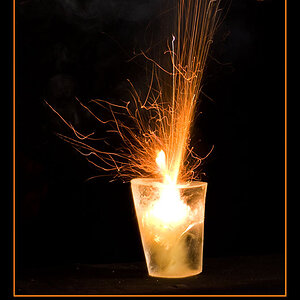
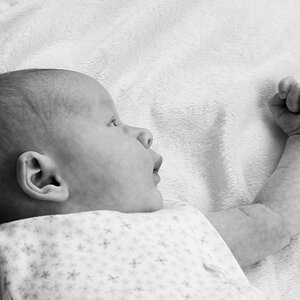

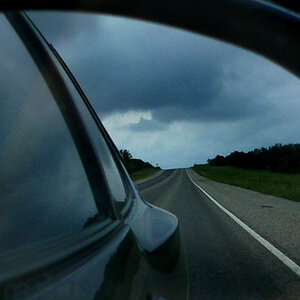

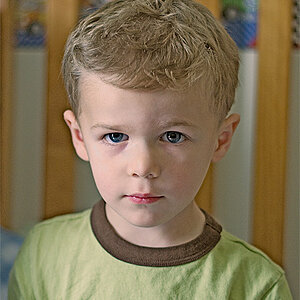
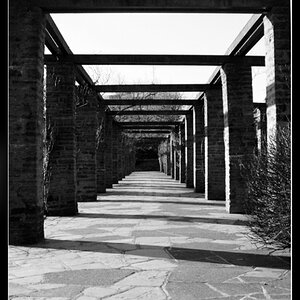

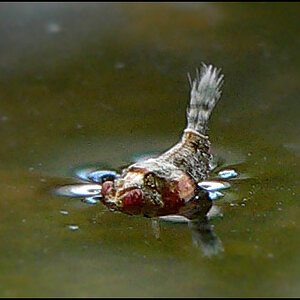
![[No title]](/data/xfmg/thumbnail/30/30863-8c53522e4ed851e96cb7411e74b9fe59.jpg?1619734482)
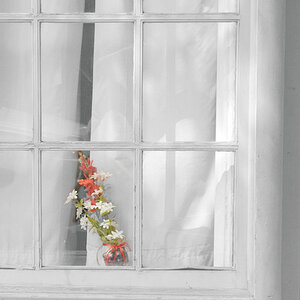
![[No title]](/data/xfmg/thumbnail/33/33025-0e4fc16dd87a477880f7aa74466d4f56.jpg?1619735838)